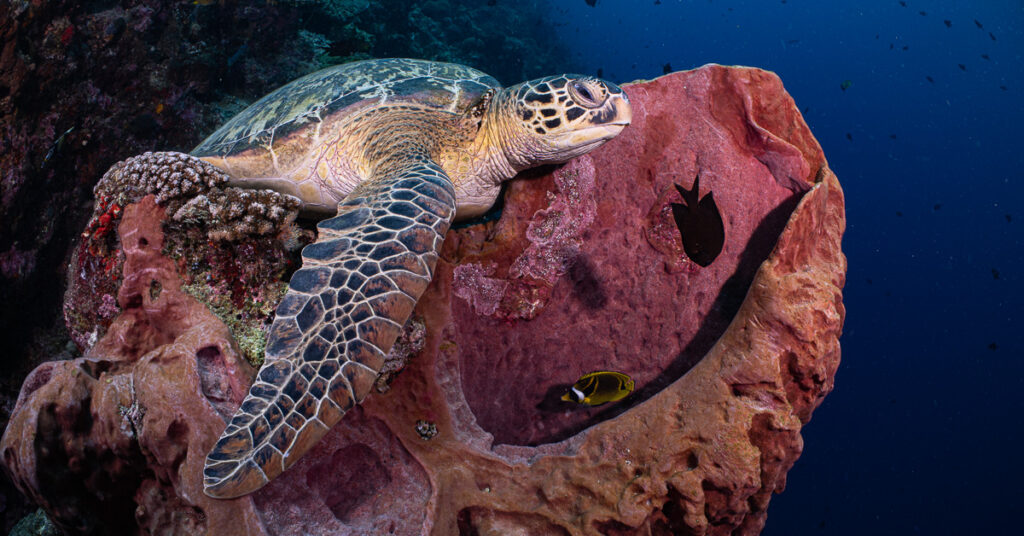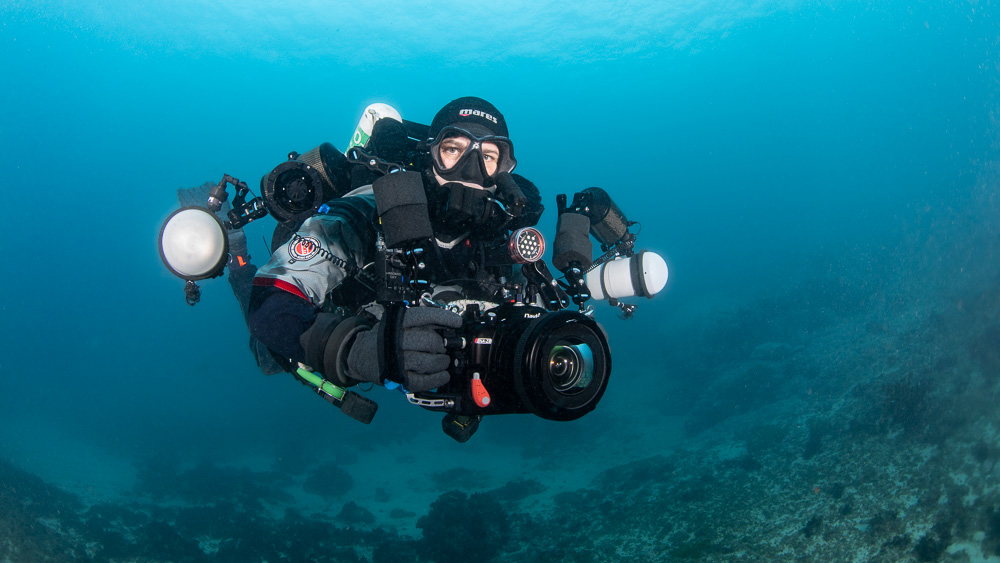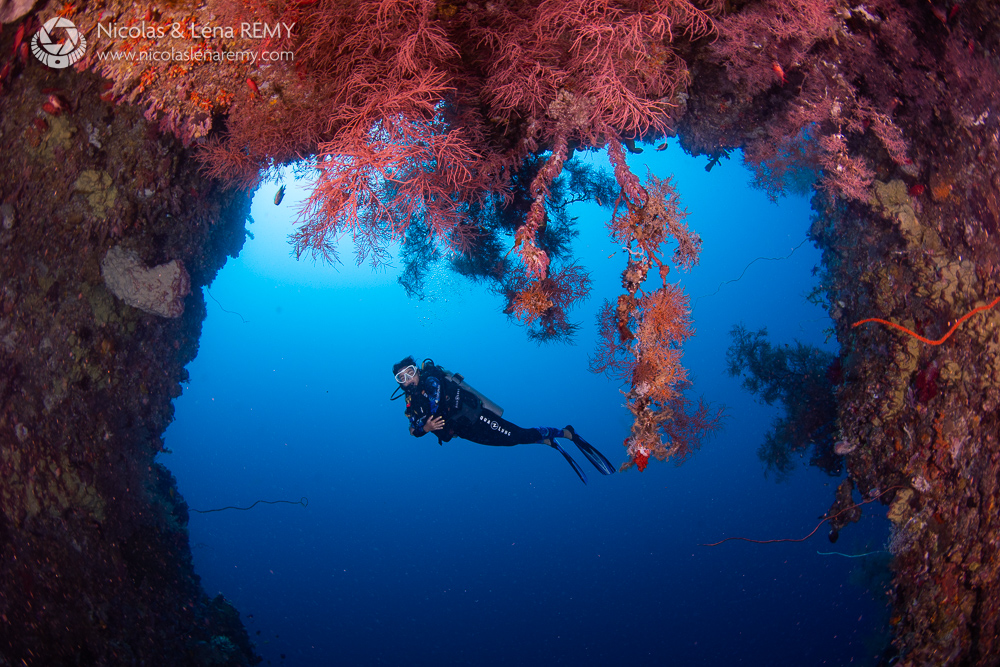Backscatter Hybrid Flash Preliminary Review
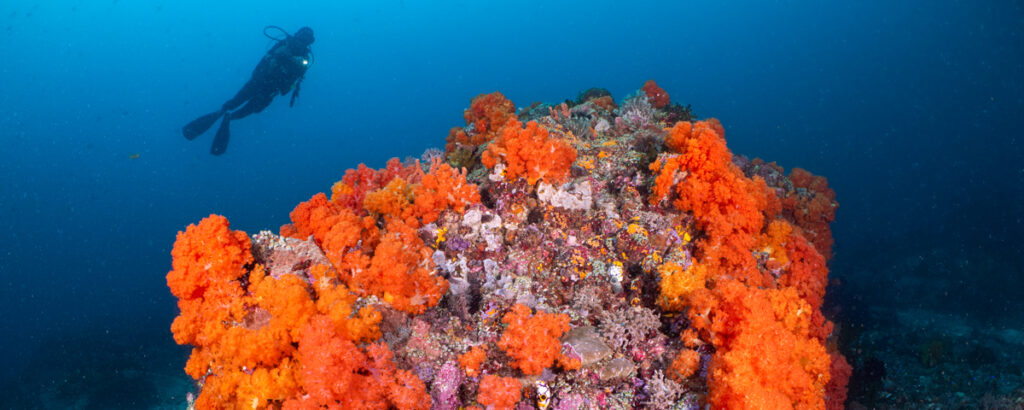
Back in January 2024, I had the chance to try a pre-production version of the Backscatter Hybrid Flash (HF-1). This review gather my preliminary observations and thoughts on this new strobe, and will be followed by a complete review of the production version, in a few weeks’ time.
Review index:
- Prelude
- A Features-Packed Strobe
- Nothing Ventured, Nothing Gained
- Shooting Large Scenes, with the Backscatter Hybrid Flash
- Form-Factor and Ergonomics
- Final Thoughts
I would like to thank Murex Resorts for hosting me at both their Bangka and Manado resorts and providing opportunities to make the most of the amazing diving at Bangka Island and Bunaken National Marine Park.
This article was first published in DivePhotoGuide, in April 2024.

Prelude
Following the 2024 Capturing Critters in Lembeh underwater photography workshop back in January, my next assignment was reviewing the Nauticam Fisheye Conversion Port (FCP-1), a project that would take me to Murex Bangka at Bangka Island, off the northernmost tip of North Sulawesi, whose lush coral gardens offered the perfect backdrop to put this novel wet optic through its paces.While there, I happened to share a dive boat with Backscatter CEO Jim Decker and Marketing Manager James Emery. The Backscatter team were clearly up to something, but I couldn’t quite tell what. Besides, I was focused on my FCP review and briefing my dive guide for modeling purposes (check our wide-angle course for guidance on working with a model).
As I climbed back on the boat after the first dive, I couldn’t help noticing the unusual black strobes attached to Jim’s housing that looked a lot like the Backscatter Mini Flash on steroids. “Should I give you the pitch?” asked Jim, and then proceeded to list the impressive specs and unique features of their latest product—the Backscatter Hybrid Flash HF-1.

A Features-Packed Strobe
The Hybrid Flash (code-name: HF-1) aims to be the lighting solution for the hybrid shooter—he, she or they that shoots both images and video. On the strobe side, the dual straight tubes deliver a guide number (GN) of 40 and a beam angle underwater of 120°, increasing to 140° when using a flat diffuser, and a whooping 160° with a dome diffuser. On the video side, an array of LEDs produce a 5,000-lumen wide beam with a beam angle underwater of 90°, which can run 45-minutes at full power, and more at intermediate power settings. The built-in focus light boasts wide beams and spot bewams, both 1,500 lumens strong, and a red light is available to assisting focus when approaching shy critters, during night dives.
In addition to all that, the Hybrid Flash offers manual as well as TTL control, with support for the Olympus/OM System RC Mode. It will also have a special digital communication protocol to facilitate highly accurate TTL exposure with Sony cameras. Like the Mini Flash, the Hybrid Flash also offers a high-speed sync (HSS) mode, making it possible to use faster shutter speeds than the camera’s spec’d flash sync speed, and has the ability to be triggered remotely.
As a keen macro shooter, I was pleased to hear that an optical snoot will be available for the Hybrid Flash (to be announced later this year). Building on Backscatter’s know-how from the Mini Flash series, this should result in an easy-to-use snooting setup, thanks to the centered aiming light (if you’re not familiar with snooting, watch our 1h30 Snoot Photography Masterclass). Presumably, this won’t be quite as streamlined as the Mini Flash and Optical Snoot combo, but I’m excited to hear it will be a do-it-all strobe, as I regularly swap from wide angle to macro during a dive, making use of my Nauticam wet lenses. In terms of lighting accessories, there will be a range of diffusers on offer too, including diffusers that modify the color temperature.
The best part was yet to come, though. “So,” Jim asked, “do you want to try them?”
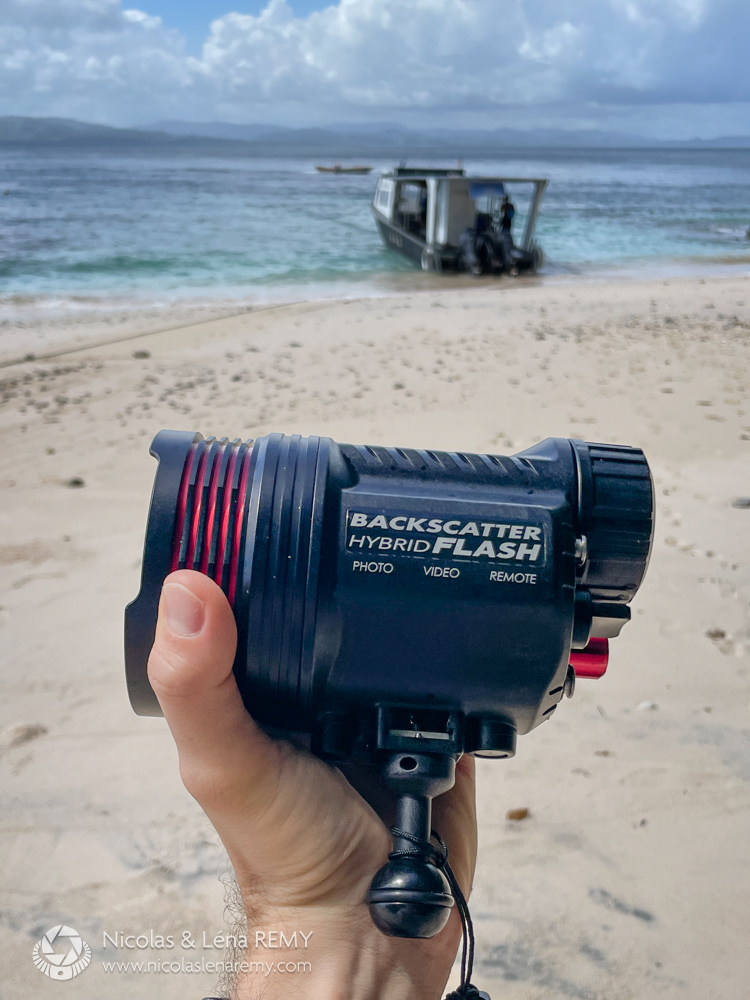

Right: the strobe has two parallel flash tubes, and an array of LEDs to support the video light, aiming light and red focus light functions
Nothing Ventured, Nothing Gained
Jim had certainly piqued my curiosity, but I only had a few dives ahead of me to capture some really good images for my FCP review. How could I be sure that the Hybrid Flash—indeed, the pre-production units Jim was offering me—would do the job? Photographing Bangka’s big reefscapes with a fisheye lens is as demanding as it gets. You need a powerful, wide beam with a light fall-off that’s as smooth as possible. I felt my trusty Retra Flash Pro strobes were class-leading for that sort of imagery (read my 2020 review), and I didn’t want to take any chances and compromise my assignment.
I decided to use my Retras for the first day in Bangka, and then switch to the Hybrid Flash for day two. After that, I would have the chance to continue using the new strobes in Bunaken for a couple of days, if I wanted to.

Shooting Large Scenes, with the Backscatter Hybrid Flash
Ask any diver who has visited Bangka what their most memorable dive was, and you’ll most likely hear about Sahaung. The coral reefs at Sahaung I and Sahaung II are spectacular: healthy soft corals, hard corals and encrusting sponges seem to grow on nearly every piece of rock, courtesy of the nutrient-rich currents flowing here daily.
You’ll find unlimited inspiration for close-focus wide angle (CFWA) imagery (learn CFWA in our wide-angle course), but Sahaung’s reefs are so healthy that I prefer to back off and capture more scenic images, showcasing the bouquets of colors laid out over large rock formations and bigger chunks of reef. Illuminating such big scenes requires a lot of light. Overall, I felt the Backscatter Hybrid Flash delivered more light than any other strobe I had used in the past, offering a very wide light beam (a claimed 160° angle with the dome diffusers) while being very bright.



I did run the Hybrid Flashes at 100% power on a number of occasions, because I was purposely backing off more than usual from the reef, and illuminating scenes bigger than I’ve ever photographed in Sahaung. I was impressed to see just how much color would be brought out when illuminating a rock that was about 5 metres (16 feet) wide, and how far the light would reach, coloring more distant sections of reef.

Occasionally, I took several full-power shots in short sequences in order to capture the “peak of the action” between my model’s breaths and fish movement, and I didn’t feel constrained by recycle time. I am curious to see how the strobes perform when shooting high-speed bursts—I am told they are able to manage 10fps at intermediate power levels.

In terms of color temperature, I noticed the Backscatter Hybrid Flash with the 6400K dome diffuser was a little colder than my usual wide-angle strobes. This isn’t a big deal, and I could easily get the colors to my liking with a white balance adjustment, and by tweaking the HSL sliders in Adobe Lightroom. In any case, Backscatter offer optional warm diffusers (4500K and 5500K variants), which would have been my default choice, but they weren’t available during my Sulawesi trip.

Form-Factor and Ergonomics
The Backscatter Hybrid Flash proved itself to be a worthy member of the “powerful wide-angle strobe” league, yet it is more compact than other strobes I have used in that category. Underwater, it is only a half pound negatively buoyant, fully loaded with batteries and a ball mount.
The mode dial, power dial and focus light push button were easy to operate in tropical waters. I’m curious to see how usable they are with the thick gloves I use in winter back home in Sydney, Australia, but the controls look similar to those of the Mini Flash 2.

A final point regarding ergonomics: I loved how easy it was to swap batteries on the Hybrid Flash. The battery compartment is secured by a double O-ring plus a “sand trap” similar to that on Backscatter’s MW-4300 video light. The trap seemed to be effective at keeping sand away from the O-rings, which I only had to lube every few dives. As with the MW-4300, the strobe requires two Nitecore 21700 (5300mAh) rechargeable Li-ion batteries.

Final Thoughts
Having used seven strobe models in the past (and written detailed reviews on two of them), I have a pretty clear wish list for my ideal strobe. The beam has be wide, smooth and bright enough for my wide-angle work, while recycling fast enough for short bursts of action. It must be compatible with a range of lighting accessories, including a lightweight optical snoot, with a centered aiming light. And the cherry on the cake? A built-in video light, allowing me to film the occasional clip between stills. It looks like the Backscatter Hybrid Flash is ticking all my boxes, in a smaller form factor than my current go-to wide-angle strobes.

I only shot pre-production versions of the Hybrid Flash for a few dives and couldn’t try all the features and accessories, but I loved what I saw and the photos I took with them. Without doubt, the Backscatter Hybrid Flash is going to make some serious waves in the underwater strobe market—and I’m looking forward to spending more time diving it, and sharing my thoughts in a complete review.
In the meantime:
- Check Backscatter’s own article for further details on the final-production version and accessories that will be available for the strobe.
- I will add some extra notes in The Underwater Club’s Forums: use these forums to ask me any question you have on this new strobe, or any of my previous reviews.
About the author
Nicolas Remy (@nicolaslenaremy) is an Australia-based pro shooter and founder of online underwater photography club & school The Underwater Club, and Nauticam ambassador. His images have been widely published in print and digital media, and have won over 40 international photo awards.

